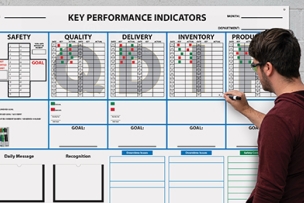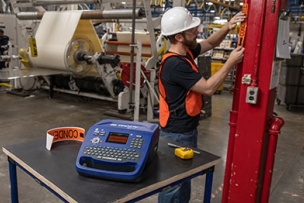“The brain prefers to see wholes,” she says, adding that it isn’t as efficient in its interpretations when seeing only half a face. With a covered face, it’s more difficult to convey what you are trying to express, and it’s more difficult for others to understand you correctly.
Read more: Fogged-Up Glasses: 5 Ways to Keep Eye Protection from Fogging While Wearing a Mask
People tend to use their eyes a lot more to express themselves. They are a secondary way to understand what someone means and what their facial expression is telling us, McCunn continues. “We are noticing gestures being made and we can compensate when we wear a mask by using our hands and arms to get what we want to say across.”
Enhancing Facial Expressions While Wearing a Mask
Humans have always used facial expressions to express their emotions—from fear to anger, joy or sadness. The modern research on body language took place in the 1960s and ’70s and was built on work done by British naturalist Charles Darwin a century earlier. Research has found strong evidence for the universal understanding of facial expressions for a handful of emotions. Indeed, the human brain appears to react to certain facial expressions.
While communicating with a mask on is an adjustment for many of us, many professions—from healthcare to construction—have required employees to wear face masks at all times.
When you can’t clearly articulate your feelings, you can use other strategies to counterbalance the loss of facial articulation, such as speaking loudly and clearly, establishing good eye contact and using your body language and gestures to communicate your ideas.
Sonetics, a provider of team communication systems for high-noise environments, recently published a set of tips for the “fine art of mask communication.” They suggest the following:
- Slow down and enunciate. Face masks muffle your words, so make sure you pronounce words a little more clearly and slowly. And if possible, say a little less.
- Use signals. If you’re on the receiving end of the conversation, give a signal that you’ve understood what’s been said. Nod or give a thumbs-up. And ask for clarification if you need it.
- Raise your hand. When we’re in a group it can be hard to know who’s talking. Raising your hand makes it clear that it’s you.
- Use technology. Communication devices can help enhance voices, especially when working near loud equipment. And some can eliminate the speech delays found in two-way radios and headsets.
Read more: How to Manage Employee Anxiety in the Workplace During the COVID-19 Pandemic
Mask Communication Techniques
Understanding how people use their bodies to convey feelings may help reduce the uncertainty around communicating with someone while wearing a mask. Various techniques can help you appear more engaged, such as turning your body toward the person you are speaking with, or nodding in agreement.
Professional speaker and trainer Sylvie di Giusto recently published a blog on how to communicate effectively while wearing a face covering at work.
In it, she recommends making use of your eyes, forehead, eyebrows, posture and head positioning to convey your emotional expression. She also recommends holding eye contact for longer to improve the conveyance of your emotions (and the feeling that you have been understood, even through your mask).
Di Giusto also suggests articulating “with bigger and stronger hand movements,” which can “accentuate the points you are trying to get across.” But she cautions against covering your eyes and eyebrows with sunglasses (for a meeting held outdoors, for example), as this takes away the chance for others to read your emotions accurately.
Modulating your voice and speaking more slowly can also be effective, according to di Giusto.
While it may be tempting just to speak more loudly to be heard when wearing a mask, we should also slow down, she says. Speaking through a mask “requires more concentration, forcing us to slow down and pause more frequently,” she notes, adding that “the power of the pause is all the more important with a face mask.”
Read more: Winter Safety Hazards in Manufacturing: 5 Ways to Stay Safe at Work
It may seem strange, but practicing how we speak when wearing a mask (and possibly even recording your voice on your phone and playing it back to hear exactly how you sound with a layer of fabric over your mouth) is not a bad idea, di Giusto says. You could also wear a mask at home for short periods each day to practice talking and breathing while wearing one.
In workplaces where there’s a great deal of background noise (construction or the sound of heavy machinery), communication is especially challenging. While it’s tempting to shout, using technology can be a more practical and effective approach.
Using wireless headsets with additional hearing protection means communications between team members are calmer and co-workers can speak normally and clearly, which is a vital component of safe work culture.
Do you have any tips or hacks for improving communications in the workplace when wearing a face covering? Share your thoughts in the comments below.





Talk to Us!
Leave a reply
Your email address will not be published. Required fields are marked *